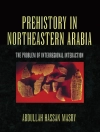After the Second World War, the international migration regime in Europe took a course different from the global migration regime and the migration regimes in other regions of the world. Cumbersome and arbitrary administrative practices prevailed in the late 1940s in most parts of Europe. The gradual implementation of regulations for the free movement of people within the European Community, European citizenship, and the internal and external dimensions of the Schengen agreements profoundly transformed the European migration regime. These instruments produced a regional regime in Europe with an unparalleled degree of intraregional openness and an unparalleled degree of closure towards migrants from outside Europe. This book relies on national and international archives to explain how German strategies during the Cold War shaped the openness of that original regime. This migration regime helped Germany to create a stable international order in Western Europe after the war, conducive to German Reunification and supported German economic expansion. The book embraces the whole period of development of this regime, from 1947 through 1992. It deals with all types of migrants between and towards European countries: unskilled labourers, skilled professionals, self-employed workers, and migrant workers’ family members, examining both their access to economic activity and their social and political rights.
Emmanuel Comte
History of the European Migration Regime [PDF ebook]
Germany’s Strategic Hegemony
History of the European Migration Regime [PDF ebook]
Germany’s Strategic Hegemony
Beli ebook ini dan dapatkan 1 lagi GRATIS!
Bahasa Inggris ● Format PDF ● Halaman 244 ● ISBN 9781351670012 ● Penerbit Taylor and Francis ● Diterbitkan 2017 ● Diunduh 3 kali ● Mata uang EUR ● ID 5327953 ● Perlindungan salinan Adobe DRM
Membutuhkan pembaca ebook yang mampu DRM












